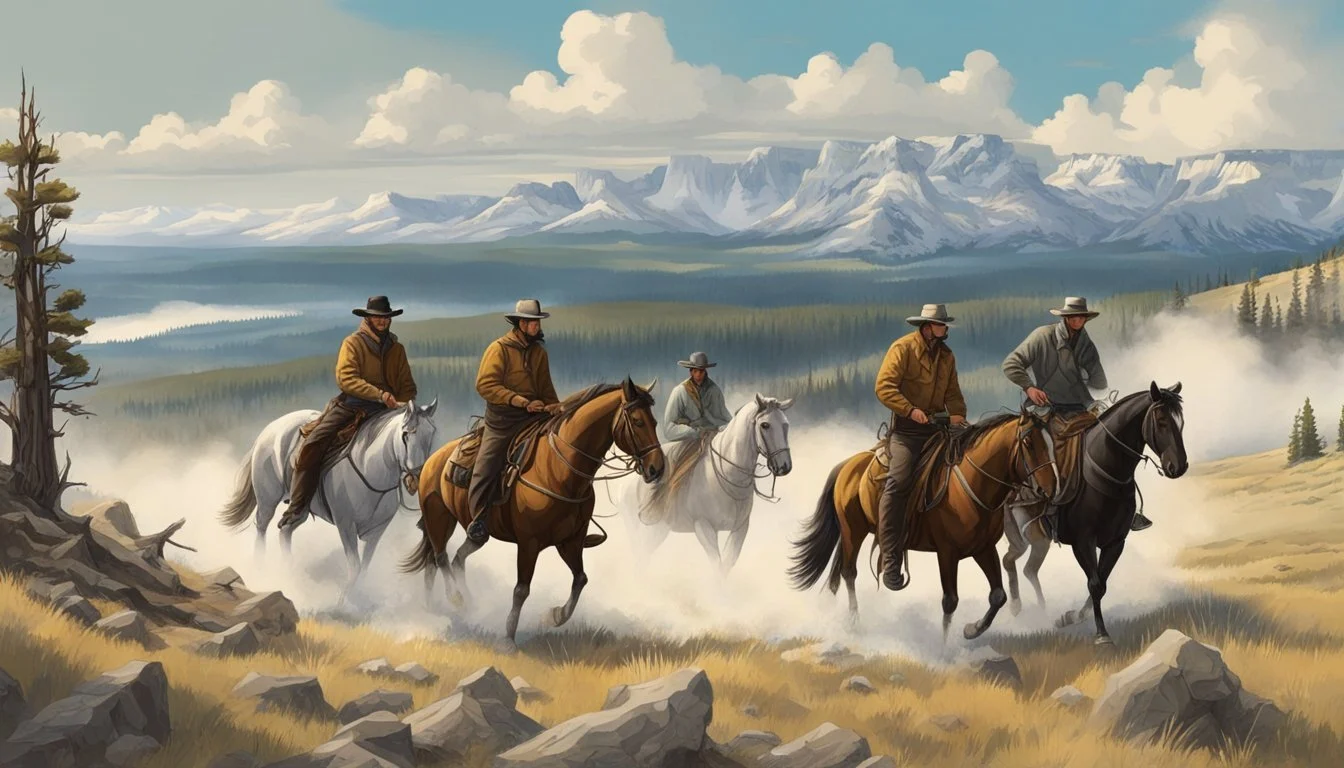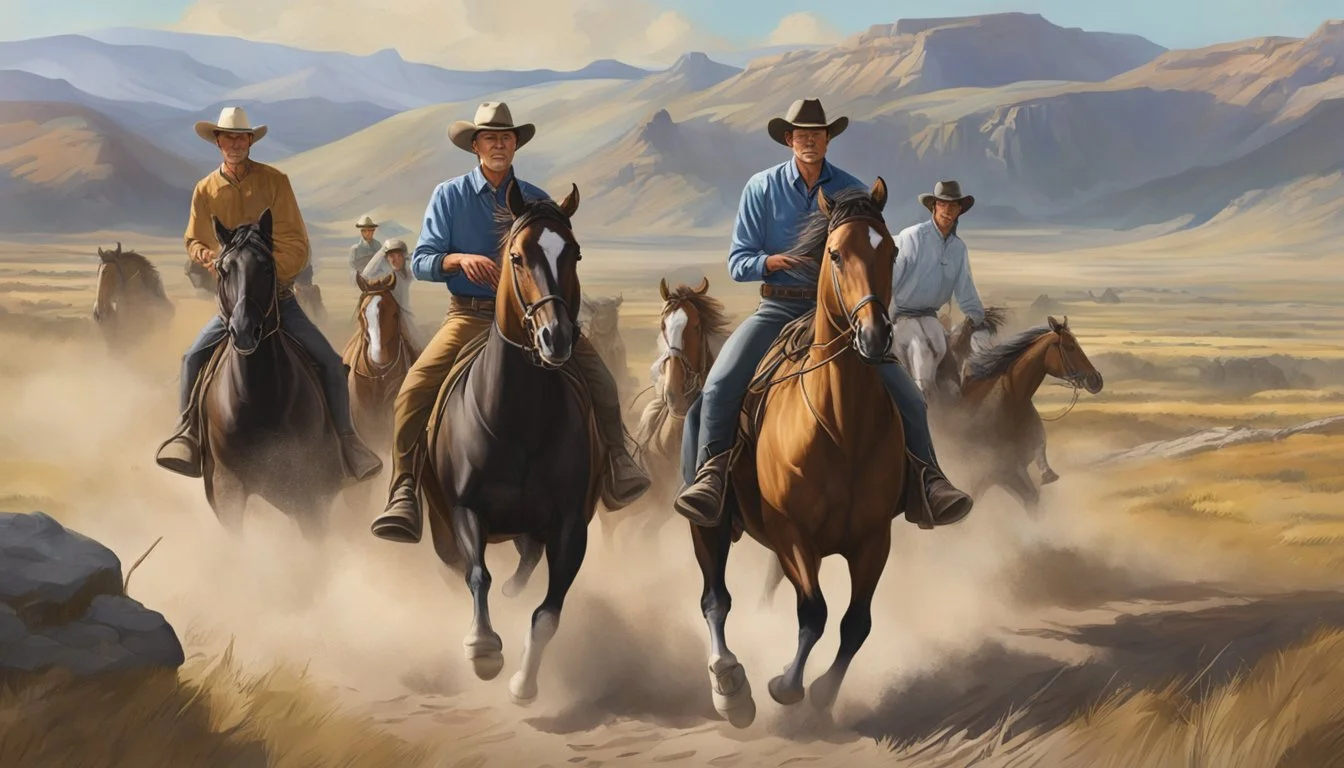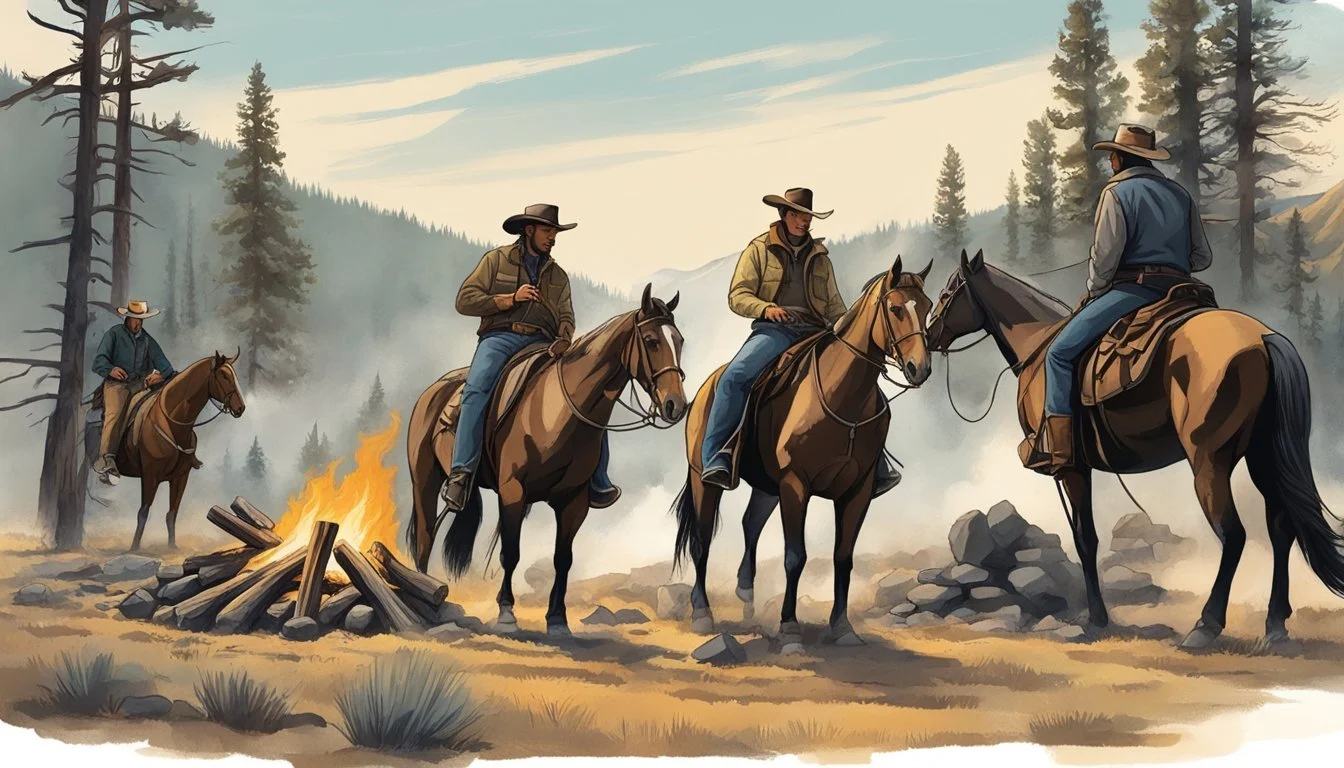Yellowstone Exposes Dark Secrets of Rural Law Enforcement in Gripping Drama
Yellowstone, the hit TV series created by Taylor Sheridan, offers a unique glimpse into law enforcement in rural Montana. Set against the backdrop of the sprawling Yellowstone Ranch, the show explores the complex dynamics between traditional ranching culture and modern economic pressures. The series depicts a blend of official and unofficial law enforcement, where the line between personal interests and professional duties often blurs, reflecting real challenges faced by rural officers.
The show's portrayal of law enforcement has resonated with viewers across America. It showcases the intricate relationships between local sheriffs, tribal police, and federal agencies, mirroring actual jurisdictional complexities in rural areas. Yellowstone's authenticity in depicting these interactions has contributed to its popularity and cultural impact.
By grounding its storylines in reality, Yellowstone allows viewers to form stronger connections with the characters and their struggles. The series tackles issues such as land disputes, police accountability, and the balance between community ties and professional responsibilities. This reflection of real-world challenges has made Yellowstone more than just entertainment; it has become a window into the realities of rural law enforcement and life.
Yellowstone Series Overview
Yellowstone, a critically acclaimed television drama, explores the complexities of modern ranching life in Montana. The show blends elements of family drama, political intrigue, and Western aesthetics to create a compelling narrative.
Creation and Production
Taylor Sheridan, known for his work on films like "Sicario" and "Hell or High Water," created Yellowstone in 2018. The series is produced by 101 Studios and Bosque Ranch Productions. Sheridan's vision for the show draws from his experiences growing up in rural Texas, lending authenticity to the portrayal of ranch life.
Yellowstone's production values are notably high, with stunning cinematography capturing the rugged beauty of Montana's landscape. The show is primarily filmed on location in Utah and Montana, adding to its visual appeal and sense of place.
Setting and Themes
Set in the picturesque Yellowstone area of Montana, the series revolves around the vast Yellowstone Dutton Ranch. This setting serves as a backdrop for exploring themes of land ownership, family legacy, and the clash between traditional ways of life and modern development.
The show delves into complex issues facing the American West, including:
Conservation vs. economic development
Native American rights
Political corruption
Family dynamics in a high-stakes environment
Main Characters and Cast
At the center of Yellowstone is the Dutton family, led by patriarch John Dutton, played by Kevin Costner. Costner's portrayal of the tough, principled rancher anchors the series.
Key cast members include:
Kelly Reilly as Beth Dutton, John's fierce and intelligent daughter
Cole Hauser as Rip Wheeler, the loyal ranch foreman
Luke Grimes as Kayce Dutton, John's son and former Navy SEAL
Wes Bentley as Jamie Dutton, the family's attorney and adopted son
These characters navigate complex relationships and power struggles, both within the family and with external forces threatening their way of life. The ensemble cast brings depth and nuance to their roles, contributing to the show's compelling character dynamics.
Rural Law Enforcement Representation
Yellowstone's portrayal of rural law enforcement offers insights into the unique challenges and dynamics of policing in remote areas. The show highlights the complex interplay between traditional methods and modern realities.
Challenges in Rural Policing
Rural law enforcement faces distinct obstacles. Limited resources and vast territories make rapid response difficult. Officers often work alone, covering large areas with minimal backup. Yellowstone depicts these realities through characters like Sheriff Donnie Haskell, who must navigate both official duties and local politics.
Budget constraints impact equipment and training. The show illustrates how rural departments may rely on outdated technology. Personal relationships play a crucial role, as officers frequently know the community members they serve.
Sheriff and Tribal Police
Yellowstone showcases the interactions between county sheriffs and tribal police. This reflects the complex jurisdictional issues in rural areas with Native American reservations. The series portrays the tensions and cooperation between these agencies.
Sheriffs hold significant power in rural counties. They are often elected officials, balancing law enforcement with community expectations. Tribal police, meanwhile, operate under different legal frameworks. The show explores how these agencies must collaborate to address cross-jurisdictional crimes.
Accuracy and Realism
Yellowstone strives for authenticity in its depiction of rural law enforcement. The series consults with real officers to ensure accurate portrayals. It showcases the unique aspects of rural policing, such as the blend of official and unofficial methods.
The show highlights how personal relationships can both aid and complicate investigations. It also depicts the challenges of maintaining public safety with limited resources. While dramatized for television, many of the scenarios reflect real issues faced by rural law enforcement agencies.
The Dutton Family Saga
The Dutton family's story intertwines power, loyalty, and the fight to preserve their vast Montana ranch. Their complex relationships and struggles shape the core of Yellowstone's narrative.
Leadership and Legacy
John Dutton stands as the patriarch of the Dutton family, overseeing the largest contiguous ranch in the United States. His leadership style blends traditional values with ruthless pragmatism. John's children - Beth, Jamie, and Kayce - each play crucial roles in maintaining the family's influence.
Beth Dutton, known for her sharp intellect and fierce loyalty, serves as her father's most trusted advisor. Jamie Dutton navigates the legal and political landscapes to protect family interests. Kayce Dutton, a former Navy SEAL, balances his duties to the ranch with his own family commitments.
The Dutton legacy spans generations, with each era facing unique challenges to their land and way of life.
Conflicts and Alliances
Power struggles within the Dutton family create a dynamic and often volatile atmosphere. Sibling rivalries, particularly between Beth and Jamie, add layers of complexity to family interactions.
External threats force the Duttons to form strategic alliances. They navigate relationships with local tribes, developers, and politicians to maintain their stronghold on the land.
The family's influence extends beyond their property lines, affecting local law enforcement and government decisions. Their methods often blur the lines between legal and illegal actions.
Economic and Environmental Pressures
The Yellowstone Ranch faces constant economic challenges. Rising costs, market fluctuations, and pressure from developers threaten the ranch's financial stability.
Environmental concerns play a significant role in the Duttons' decision-making. They balance traditional ranching practices with conservation efforts to preserve their land.
Land ownership disputes arise frequently, pitting the Duttons against various entities seeking to claim parts of their vast property. These conflicts often escalate into legal battles or physical confrontations.
Ranch life demands a resilient spirit from the Dutton family. They must adapt to changing times while striving to maintain their traditional way of life and values.
Cultural and Social Themes
Yellowstone explores complex cultural and social dynamics in rural Montana. The show delves into Native American relations, land disputes, and traditional ranching life, reflecting real issues faced in the American West.
Native American Relations and Rights
Yellowstone portrays the complex relationship between Native American tribes and other stakeholders. The show highlights ongoing struggles for recognition and respect of tribal sovereignty. Characters like Thomas Rainwater advocate for Native rights and cultural preservation.
The series depicts conflicts over land use and resource management between tribes and non-Native entities. These storylines mirror real-world tensions in many parts of the American West.
Yellowstone also touches on efforts to maintain Native languages and traditions. The show presents both challenges and opportunities for Native communities in modern society.
Land and Sovereignty Issues
Land ownership and use are central themes in Yellowstone. The Dutton family fiercely defends their ranch against various threats, including developers and government agencies.
The show explores the concept of eminent domain and its impact on landowners. Conflicts arise when public interests clash with private property rights.
Yellowstone also examines the role of state and federal governments in land management. Characters navigate complex legal and political landscapes to protect their interests.
Water rights and access to natural resources feature prominently, reflecting real concerns in many rural areas.
Ranching Culture Evocation
Yellowstone romanticizes traditional ranching life while acknowledging its challenges. The show depicts daily ranch operations, from cattle drives to branding.
Family legacy and generational land ownership are key themes. The Duttons' connection to their land goes beyond economic considerations, touching on identity and heritage.
The series contrasts ranching culture with modern societal changes. It explores tensions between preserving tradition and adapting to new realities.
Yellowstone showcases ranching skills and knowledge passed down through generations. This portrayal resonates with viewers interested in Western heritage and lifestyle.
Modern Western Genre
Yellowstone revolutionizes the Western genre for contemporary audiences. The show blends traditional elements with modern complexities, creating a unique viewing experience.
Narrative Techniques and Character Development
Yellowstone's storytelling balances classic Western themes with present-day issues. Land disputes, political corruption, and family dynamics drive the plot forward. The Dutton family, led by patriarch John Dutton, embodies complex characters shaped by their environment and legacy.
Character arcs explore moral ambiguities and deep-rooted motivations. Rip Wheeler's unwavering loyalty contrasts with Jamie Dutton's inner conflicts. Beth Dutton's fierce determination challenges gender stereotypes in the ranching world.
The series doesn't shy away from violence, using it to highlight the harsh realities of rural Montana. This approach adds depth to character development and plot progression.
Visual Aesthetics and Montana Landscapes
Yellowstone's cinematography showcases Montana's breathtaking landscapes. Wide-angle shots capture vast prairies and towering mountains, emphasizing the characters' connection to the land.
The show's visual style blends modern techniques with classic Western imagery. Scenes of horseback riding and cattle drives evoke nostalgia, while sleek offices and modern vehicles ground the series in the present.
Costume design reflects this duality. Traditional cowboy attire coexists with contemporary fashion, visually representing the clash between old and new ways of life.
Cultural Impact and Popularity
Yellowstone has become a cultural phenomenon, attracting millions of viewers. Its popularity stems from its ability to appeal to diverse audiences, from Western enthusiasts to drama fans.
The show's success has sparked renewed interest in the Western genre. It has inspired spin-offs like "1883" and influenced other productions in the Neo-Western category.
Yellowstone's portrayal of ranch life has impacted popular culture. It has increased tourism to Montana and boosted interest in Western fashion and lifestyle. The series continues to shape public perceptions of modern cowboy culture and rural American life.
Contemporary Issues in Yellowstone
Yellowstone portrays complex challenges facing rural Montana communities. The show explores tensions between tradition and progress, environmental protection and economic development, and competing interests vying for power and resources.
Gentrification and Urban Development
Market Equities' ambitious plans to transform Paradise Valley epitomize the gentrification pressures facing rural areas. The corporation's vision of luxury resorts and an airport threatens to displace long-time residents and alter the region's character.
This storyline reflects real conflicts between preserving rural ways of life and embracing economic opportunities. The Duttons' fierce resistance to development echoes concerns about losing agricultural land and cultural heritage.
Urban sprawl's impact on wildlife corridors and natural habitats is also highlighted. The show depicts the struggle to balance growth with conservation in ecologically sensitive areas.
Conservation Efforts and Environmental Concerns
Environmental protection features prominently in Yellowstone's narratives. The series showcases efforts to preserve wildlife, protect watersheds, and maintain open spaces.
Key plots involve:
Wolf reintroduction programs
Battles over water rights
Conflicts between ranchers and conservationists
The show explores the complex relationships between ranchers, environmentalists, and government agencies. It highlights how different stakeholders view land use and resource management in the region.
Climate change impacts on Yellowstone's ecosystem are subtly woven into storylines about changing weather patterns and wildlife behaviors.
Political Intrigue and Economic Battles
Yellowstone portrays a web of political maneuvering and economic conflicts. The Dutton family's efforts to maintain control of their ranch involve:
Leveraging political connections
Navigating tribal sovereignty issues
Battling corporate interests
The series depicts corruption at various levels of government, from local officials to state legislators. It shows how money and influence shape policy decisions affecting land use, resource extraction, and economic development.
Storylines explore tensions between traditional industries like ranching and emerging sectors such as tourism and tech. The struggle for economic survival in changing rural economies is a central theme.






